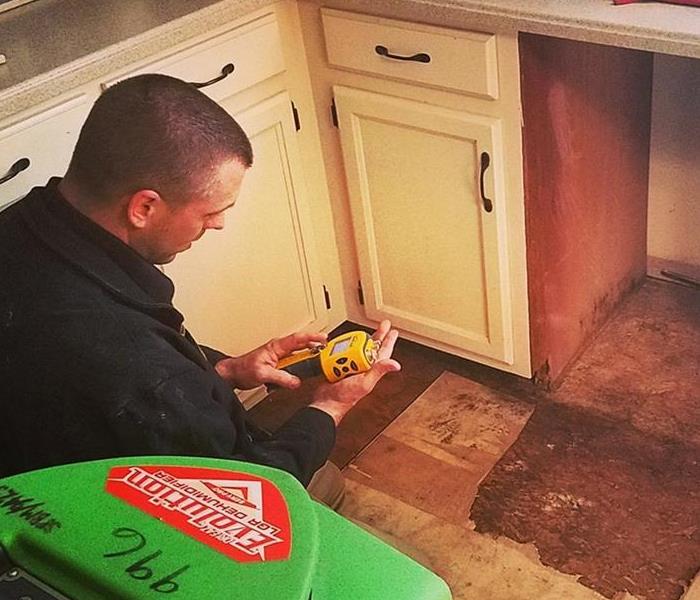What SERVPRO does during your water damage
2/10/2019 (Permalink)
Now that we have established what water damage is, and why it is necessary to have SERVPRO of Ellis County come to do the water mitigation, it is important to take a look into what work we will be performing to better familiarize yourself with the world of water mitigation.
First thing is first
The first thing we do is get an accurate picture of the affected areas. After extracting any standing water, we use moisture readers to measure the moisture content in your floors, walls, ceiling, and whatever else might be affected by water damage.
Our trained technicians have seen a myriad of different damages ranging in size and source and can get a basic understanding of your damages after a short time reading the moisture inside your affected and non-affected areas.
Keep in mind, you may not be able to see or feel that any surface is wet, but inside your floorboards or behind your drywall, there may be moisture trapped there that can cause more problems down the line.
Once we have a clear picture of the water damage at hand, we plug our readings and measurements into proprietary software to accurately gauge the drying requirements. This allows us to easily and automatically know how much equipment we will need to place.
Drying equipment
Now that we understand how much equipment needs to be placed for proper and expedient drying, the next step is to unload all required equipment from our trucks and place them in your house.
Water damages require the use of dehumidifiers and air movers. A dehumidifier is self-explanatory; we use industrial grade dehumidifiers to suck the moisture content out of the air, the very same air that comes into contact with the affected surface and attempts to reach an equilibrium between the wet material and dry air, removing some of the moisture that then gets fed back into the dehumidifier.
Our air movers are placed strategically around the room to create a circular vortex of air flow. The natural air flow combined with intentionally feeding air into dehumidifiers works in tandem to greatly assist the drying process.
Once our equipment has been placed, we must leave it running around the clock for the best results.
Then, the next step to do is monitor our equipment and the drying process. Our technician will ask when you will be available for an equipment check the following day, and we will arrive within a 30-minute window in order to take new moisture readings and assess how the floors, walls, and any affected area is drying.
Our typical jobs require 3-5 days of drying to reach acceptable levels of moisture.
When equipment doesn’t quite do the job
I wish it were as simple as place equipment and wait a few days, however certain circumstances may not allow us that luxury. If, for example, the affected drywall remains wet and doesn’t show an indication that it will dry, we might have to pull the baseboards off and drill holes in the wall to allow proper ventilation.
If wooden floors are buckling from water damage when we arrive on site, or if they are so saturated with water that our best efforts will not sufficiently dry them, they will have to be removed.
Certain material, such as sewage, is categorized as a Cat 3 water damage, and any affected areas must be replaced.
All of this falls under the term ‘demo’ and is sometimes a necessity. Do not worry, however. Whatever wall or flooring we have to remove, we will be able to rebuild for you and make it, “Like it never even happened!”
With the general water damage proceedings understood, the next thing to do is take a look at the different types of water damages and explain what they mean for you.
Keep a lookout for our next blog about the different water damage categories!



 24/7 Emergency Service
24/7 Emergency Service
